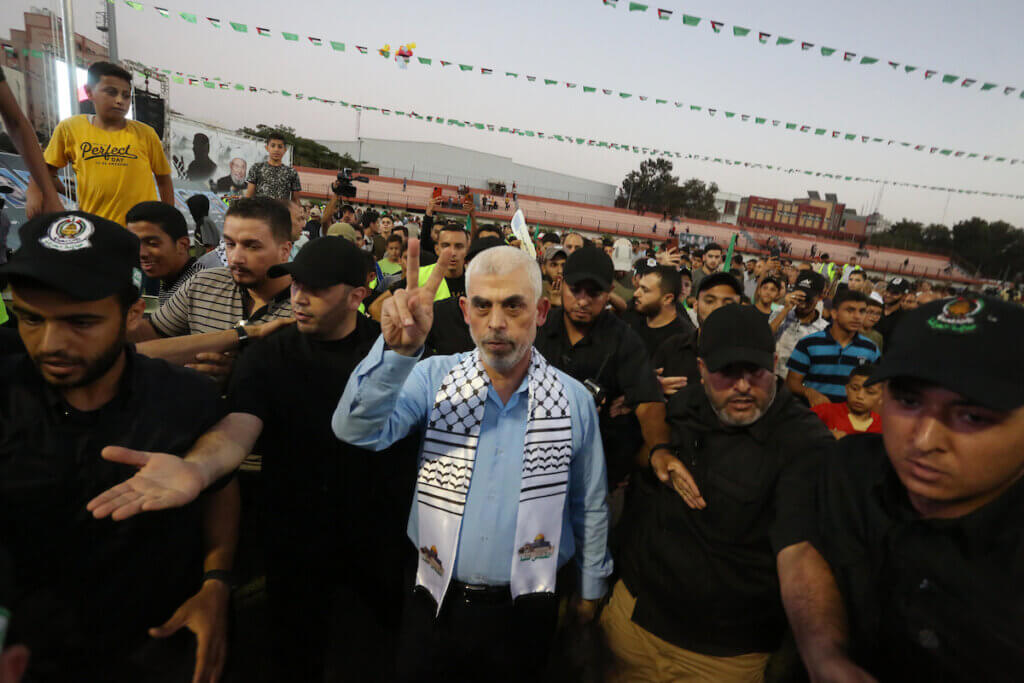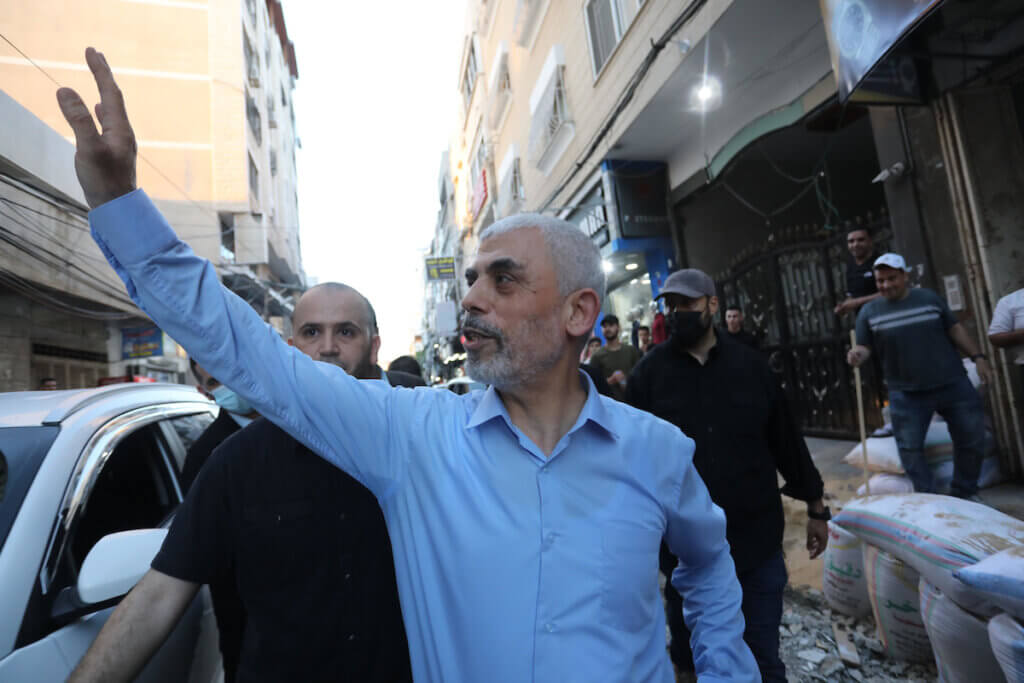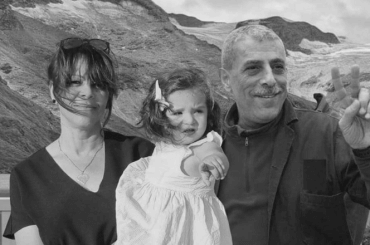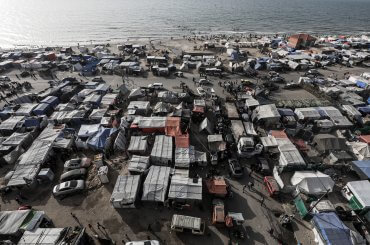Al-Shawk wa’l Qurunful (“Thorns and Carnations”)
by Yahya al-Sinwar
N.p, 2004, 338 pp. (Arabic)
Yahya al-Sinwar, the leader of Hamas in Gaza and author of this autobiographical quasi-novel, is the hero of Gaza to millions of Palestinians and Arabs and an arch-villain to Israel and many around the world. To his admirers, he is the latest and the most commanding figure in a series of Palestinian resistance leaders that might be said to have started with the Sheikh `Izz al-Din al-Qassam, Sinwar’s iconic inspirer. As Sinwar has already inscribed his name in Palestinian and Third World history of resistance to colonialism – and as a terrorist for many others – so this piece of writing by him acquires considerable documentary importance by revealing his inner life, thoughts, and aspirations at least as he chose to represent these in his work.
If memoirs are a window to understand their authors, Thorns and Carnations is for those interested in understanding Sinwar, the Hamas leader in Gaza.
His text, written while in prison in Israel, bears the somewhat cliched title of Al-Shawk wa’l Qurunful, (“Thorns and Carnations”), a binary title quite common in recent Arabic autobiographical literature to suggest contrasting life experiences, well outlined in this novel: love and violence, hope and despair, tenderness and strength. A more fitting title might have been something like Resistance and Faith or even The Faith to Resist. What we have here is a bildungsroman, an as-it-were novel that tells the story of a journey of spiritual education and development, told from the viewpoint of an I, called “Ahmad”, and a tale of two families in Gaza and Hebron, and two intertwined resistance movements. The fictive element is skin deep, barely more than a change in names, while the autobiographical element is clearly meant to be factual, as stated in the author’s foreword: “The imaginative element in this work consists merely in turning it into a novel…everything else is as real as I have lived or heard it and as its narrators lived and heard it in our beloved homeland Palestine.”
The text, smuggled in dribs and drabs from the author’s prison, disjointed like the Palestinian lives it describes, and with abrupt changes of scene, is nevertheless vivid precisely because of its spontaneity and candor, describing participation in military operations and planning, keeping his cousin’s secrets about these operations and so on. It has an almost conversational style, like someone needing urgently to narrate a story, and there is as much argument and debate, back and forth, as accounts of acts of resistance, people talking almost as much as acting.
The cast of characters is large, more so than in much Palestinian camp literature of testimony, to the point where readers need to keep a close eye on their entrances and exits. But three or four stand out. First is the family’s mother, the father having vanished in the early days. She is a majestic figure, immensely proud, splendid in grief and joy, an authoritarian whose every command is obeyed or else challenged gently and in dread, gracious and welcoming, and tireless in her devotion to her children and relatives. Then there are the two most prominent personalities, Mahmud, the narrator’s brother, the Fatah (formerly The Palestinian National Liberation Movement) and PLO man, who clings to the view that negotiation and peaceful resistance will secure Palestinian rights; and Ibrahim, the Islamist cousin, who argues that armed resistance, fortified by faith, is the answer. It was Ibrahim who launched Hamas’s militant branch. Finally, there is the corrupt collaborationist cousin, Hasan, a constant reminder of the dangers from within. The debates between them, which grow more intense at every major juncture in Palestine’s recent history, reveal the depth of politicization among all classes of Palestinians and might be regarded as a historical register of ideological debates among the Palestinian factions. We hear voices questioning the viability of resistance, the pros and cons for the possibility of peace at the inception of the peace process, and the disillusion with it as those negotiations became a never-ending process. Gaza may at times appear to be on a faraway planet, yet the Gazans themselves, though entrapped and suffocatingly besieged, are remarkably aware of their regional environment and ever eager to learn its lessons.
One arresting anecdote in the early life of the child “Ahmad” describes how the aged grandfather would each day laboriously set out with his walking stick searching for any news of his vanished son. This tragic tableau eventually ends with reconciliation when, long after the death of the sorrowing grandfather, the prodigal father is found to have simply decamped secretly to Jordan, where he remarried. Two of his grown sons from that second marriage would eventually arrive in Gaza and be embraced by the mother as though they were her very own sons. This episode has the contours of a parable enacted on the same terrain as the Gospels.
The narrator’s childhood is a series of images and impressions not too different from other descriptions of refugee camp life: among the earliest memories is the rainwater dripping from the roof into a pan, the crowded existence, a child’s dread when first hearing the word “war,” a line of women struggling to fill their canisters at a spigot, his mother crying as she is forced to accept money from a rich brother; a children’s game played with wooden sticks as rifles recreating the 67 war, but with the Arabs inevitably the winners. In fact, the book opens with his memories of the war, and in particular, the narrator’s father digging a hole in the backyard of the house where his and his uncle’s families hid during the war. The narrator’s early childhood is a series of anecdotes about acute poverty but also much pride and dignity of managing poverty through work after school.
As the narrator grows into his late teens, the Israeli occupation of Gaza takes place. From this point onwards, the memoir is predominantly concerned with the resistance to occupation, its challenges and difficulties, ebbs and flows, and the debates about it, pro and con, often appearing to reflect class divisions. Resistance is at first spotty, uncoordinated, haphazard, and met with brutal and disproportionate reprisals by the occupier. Woven into this atmosphere is, by contrast, a slow improvement in living standards resulting from Gazan workers bringing back wages earned in Israel, but also minute descriptions of life in prisons and methods of torture. Woven into it, too, is the growth of three main political currents and ideologies: the Fatah line, the leftist Marxist line, and the emergent Islamist line, which slowly overtakes the other two, especially under the leadership of the charismatic Sheikh Ahmad Yasin, identified as such in the memoir. The narrator, increasingly drawn to the Islamist line, is nonetheless remarkably objective in his account of the other two currents.
As resistance becomes better organized, institutions in Gaza like mosques and the Islamic University begin to act as hubs of organized action; yet, in between bouts of resistance, life proceeds more or less “normally.” There are several love stories, which are always conducted with long distance glances and great propriety, and marriages are entirely encouraged and arranged by the formidable mother, who treats marriage as an inevitable destiny for her sons, even when they protest that Palestine is their only love—so near and yet so far. When “Ahmad” visits Jerusalem for the first time, his encounter with the city and with other Palestinians is visionary and hypnotic. Since 1948, Gaza had been something of an island, cut off, by and large, from the motherland, which over the years had acquired a powerful mystique, the object of a transcendent love.

Scholars have noted how the ideology of Hamas has, over time, shed its antisemitic tropes, which had been largely inspired by Western antisemitic discourse, and now aligns itself not so much with Islamic concepts of jihad but with global anti-colonialist struggle. However, what is remarkable about this memoir-novel, written in the early days of the movement, is its lack of antisemitic sentiment. The narrator’s real ire is reserved for collaborators. This ire seems to have increased in time and is what gave Sinwar the title “Butcher of Khan Younis” for killing anyone who is proven to be a collaborator. There were times, under Israeli occupation, when thousands of Gazans went to work in Israel and, upon their return, introduced the sights and sounds of a Westernized society to a conservative society; towards them, the narrator is strikingly tolerant. There were also times when thousands of Israeli tourists visited Gaza, and there were even instances when Israeli employers came to Gaza to attend the weddings of their Gazan employees. But there is no sign of antisemitism in what the narrator says about them. Resistance, even though religiously inspired, is to an occupier, not to their religion.
Though he is a man of deep faith, the narrator is equally a pragmatist. Imprisoned at age 26 and released at age 49, his imprisonment, kept out of this memoir, allowed him to reflect long and deeply about his life’s mission. If Gaza was so exposed above ground, why not devise an underground? After all, the hole his father dug during the 67 war, with which the whole memoir is launched, protected them from the shelling. The resultant 450 miles of tunnels show how Gaza, a strip which “has been under a land, sea and air blockade by Israel, as well as a land blockade by Egypt, since 2007 and is not believed to possess the type of massive machinery typically used to build tunnels deep underground” has been able to survive. This is Sinwar’s achievement as a guerrilla leader, but in this memoir, we detect another Sinwar, a social analyst with a complex personality: in his own words, a thorn, and a carnation.
Still, the reader is left with some questions when reading Thorns and Carnations. Why did the author choose to fictionalize his memoir? Why did he choose to represent his life in this way? Why did he begin it with the 67 war and the hole that hid him and his family from the war? Why is the more than two decades that Sinwar spent in prison not represented here? And why did he leave it to the Israelis to talk about his personae when they encountered him in prison?
There are also some general takeaways we learn from reading this memoir. What stands out perhaps most strongly is the chronic and sustained violence, destruction, and deprivation experienced by the narrator from early childhood right through his entire adult life. The memoir opens with the memories of childhood in the midst of the 1967 war, and proceeds through the 1973 war, the Israeli occupation of Gaza, the continuous raids by Israeli police to arrest fighters in the Palestinian camps, and the rise of militant resistance. It is a stark reminder that the period of extreme violence we have been witnessing since October 7 of last year, is but one chapter in a long history that extends back throughout the lives of every Palestinian in Gaza today and beyond.
One is also struck by the overwhelming commitment of the narrator to fighting for a liberated Palestine, but at the same time, there is ambiguity and a lack of detail in the text as to what exactly a free Palestine would look like. There is certainly no clear call for any one particular future, whether this be an Islamic state, a two-state, or a one-state solution. Liberation from occupation is paramount, but liberation toward what is much less clear.
Finally, throughout the memoir, there is an obsessive and creative focus on the project of building an infrastructure of resistance in both a physical and institutional sense. We witness the growth of the Islamic University, the schools, the networks of resistance between the West Bank and Gaza, as well as his cousin’s recruitment of scientists needed for the manufacturing of weapons for armed resistance. From reading Thorns and Carnations, one gets the distinct sense that the events of last October 7 were indeed long in gestation.



A new low for Mondoweiss, glorifying Sinwar.
What was he in jail for? Murdering other Palestinians, people he considered “collaborators”. He killed them with his own hands.
During his imprisonment he was treated in an Israeli hospital, a brain tumor was removed.
He was released in the Shalit deal.
As leader of Hamas on Oct 7 he’s responsible for mass murder, rape and kidnapping. He’s still holding 136 hostages: children , women and men. Jews and Arabs and foreigners… Over 100 may still be alive, but time is running out. Free the hostages now!!
Scholars note that Hamas barely hates Jews any more. And if they ever did it was not their fault, they were just following the lead of “westerners”.